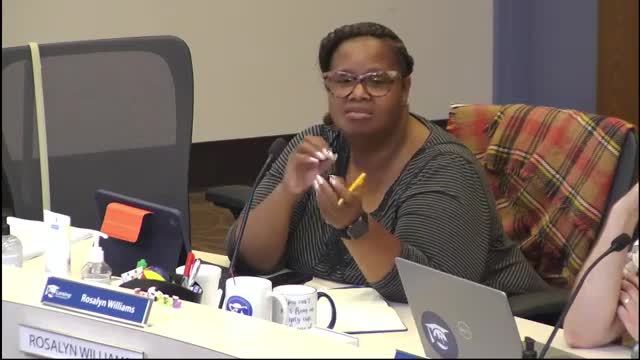Schools face staffing crisis impacting student performance
June 14, 2024 | Lansing Public School District, School Boards, Michigan

This article was created by AI summarizing key points discussed. AI makes mistakes, so for full details and context, please refer to the video of the full meeting. Please report any errors so we can fix them. Report an error »

During a recent government meeting, discussions centered on the challenges of accurately measuring racial and ethnic representation in educational data, particularly in relation to standardized testing. A key point raised was the automatic categorization of Middle Eastern and North African students as part of the white demographic, which may not reflect their self-identification. This issue highlights the limitations of current data collection methods, where students often do not have the opportunity to choose how they identify, as their race and ethnicity are designated by their parents.
Despite these concerns, officials assured that the impact of race and ethnicity on academic performance data has been statistically accounted for in analyses. By using control variables such as gender and rapid guessing percentages, the data aims to provide a clearer picture of student performance over time, independent of demographic shifts.
Trustee Rodriguez emphasized the need to address declining math proficiency in middle school students, noting that staffing shortages have exacerbated the issue. At one point, the district faced 54 vacancies in grades 6-8, leading to reliance on substitute teachers, many of whom lacked expertise in math. To combat this, a pilot program was introduced, utilizing certified teachers through virtual platforms to support in-class instruction. The district is currently evaluating the effectiveness of this approach.
Trustee Nowinski raised concerns about tracking the long-term performance of students, particularly those affected by the COVID-19 pandemic. While some schools have conducted cohort analyses, the district has not yet implemented a comprehensive approach. The complexity of restructuring data for cohort tracking was acknowledged, but officials expressed a commitment to exploring this avenue for better insights into student progress.
Overall, the meeting underscored the ongoing challenges in educational data collection and the need for innovative solutions to enhance student learning outcomes, particularly in the wake of staffing shortages and the lingering effects of the pandemic. The district plans to revisit these issues in future meetings, with a focus on improving student achievement and addressing disparities in educational access and performance.
Despite these concerns, officials assured that the impact of race and ethnicity on academic performance data has been statistically accounted for in analyses. By using control variables such as gender and rapid guessing percentages, the data aims to provide a clearer picture of student performance over time, independent of demographic shifts.
Trustee Rodriguez emphasized the need to address declining math proficiency in middle school students, noting that staffing shortages have exacerbated the issue. At one point, the district faced 54 vacancies in grades 6-8, leading to reliance on substitute teachers, many of whom lacked expertise in math. To combat this, a pilot program was introduced, utilizing certified teachers through virtual platforms to support in-class instruction. The district is currently evaluating the effectiveness of this approach.
Trustee Nowinski raised concerns about tracking the long-term performance of students, particularly those affected by the COVID-19 pandemic. While some schools have conducted cohort analyses, the district has not yet implemented a comprehensive approach. The complexity of restructuring data for cohort tracking was acknowledged, but officials expressed a commitment to exploring this avenue for better insights into student progress.
Overall, the meeting underscored the ongoing challenges in educational data collection and the need for innovative solutions to enhance student learning outcomes, particularly in the wake of staffing shortages and the lingering effects of the pandemic. The district plans to revisit these issues in future meetings, with a focus on improving student achievement and addressing disparities in educational access and performance.
View full meeting
This article is based on a recent meeting—watch the full video and explore the complete transcript for deeper insights into the discussion.
View full meeting
